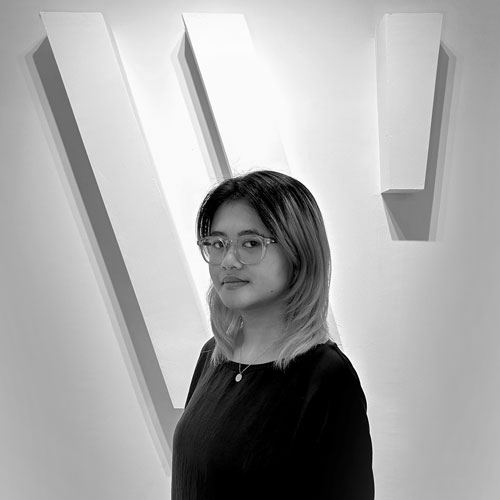Writer & Editor: Alif Hudanto
Proses pembangunan Ibu Kota Negara (IKN) baru, Nusantara, sedang berjalan bertahap. Bersamaan dengan itu, IKN menjajaki proses branding sebagai ibu kota baru. Asosiasi Desainer Grafis Indonesia (ADGI) kembali ditunjuk oleh Pemerintah Republik Indonesia melalui mandat lembaga Otoritas Ibu Kota Negara (OIKN) sebagai mitra strategis dalam perancangan identitas visual Ibu Kota Negara Nusantara.
Setelah melewati proses kurasi Open Call dari 500 desainer pendaftar, 10 karya logo finalis tersaring dan diajukan oleh OIKN kepada Presiden RI untuk dipilih 5 logo yang diumumkan ke masyarakat. Berdasarkan siaran pers Otorita Ibu Kota Nusantara, masyarakat kemudian dilibatkan untuk memilih desain logo mana yang akan menjadi logo terbaik melalui sistem voting.
"Ibu Kota Nusantara adalah milik dan kebanggaan seluruh masyarakat Indonesia dan dibangun untuk kemajuan bangsa Indonesia, oleh karenanya saya mengajak seluruh anggota masyarakat Indonesia untuk terlibat berkontribusi kepada Ibu Kota negara baru ini dengan cara memilih logo yang paling sesuai untuk Ibu Kota Nusantara," kata Bambang Susantono, Kepala Otorita Ibu Kota Nusantara (OIKN), dikutip dari siaran pers resmi Otorita Ibu Kota Nusantara.
Dalam proses penciptaan logo, \\’ dengan apik dan detil melihat aspek persepsi eksternal dan nilai-nilai internal untuk membangun strategi langkah solid dan konkret untuk branding Ibu Kota Negara (IKN) Nusantara secara keseluruhan. Simak kutipan wawancara ini ketika founder \\’, Sisiana Pradita dan Wildan Ilham, membeberkan setiap kerangka berpikir di balik desain logo Nusantara yang mereka usung.
Sebelum jauh membahas desain logo, kalian melihat Ibu Kota Negara (IKN) Nusantara sebagai apa?
Sisiana: IKN Ini adalah sebuah entitas kota yang berambisi menjadi kota dunia yang berarti harus lebih keren dari New York.

Dalam riset kalian, kota mana yang bisa menjadi acuan kota dunia bagi IKN?
Sisiana: Konsep kota dunia itu sudah banyak dibahas sosiolog sejak lama. Menurut sosiolog, kota dunia ini muncul akibat globalisasi. Ketika globalisasi membuat dunia menjadi dalam satu jaringan dan jarak semakin dekat, muncul lah ide bahwa akan ada kota-kota penting yang akan berpengaruh besar di dunia melebihi negaranya. Pengaruh besar ini bisa terlihat dari segi ekonomi dan informasi.
Sejauh ini, golden principle kota dunia itu future oriented. Rebranding kota dunia yang saat ini sudah komprehensif dan future-oriented itu diantaranya Chicago, Tokyo, Singapore dan Los Angeles. Beberapa kota-kota dunia lain masih berusaha membawa atau menjual sisi ekspresi kota dan gaya hidup atau cenderung menunjukkan warisan budaya.
Branding kota dunia yang menjual ekspresi kota mengadopsi logo atau identital visual yang juga generatif dan ekspresif. Sayangnya, logo generatif justru membuat audience kesulitan mengingat city branding lewat logonya. Melbourne adalah contoh kota yang akhirnya hanya menggunakan logo hitam primernya untuk efektivitas komunikasi brand.
Memang pada akhirnya, pendekatan rebranding baru yang future-oriented mengarah pada konsep single minded logo. Ekspresi branding sebuah kota dunia menyesuaikan atau sama dengan logonya. Logo menjadi bagian dari pengalaman visual sekaligus menjadi elemen komunikasi ke masyarakat dunia. Audience akan terpapar dengan satu elemen visual dalam jangka panjang. Terlebih branding sebuah kota dunia memang memakan waktu lama. Jadi, riskan kalau menggunakan elemen visual yang berubah-ubah.
Perpektif kalian untuk membuat branding yang melihat karakter kota dunia sebagai faktor eksternal dan nilai budaya indonesia sebagai faktor internal, mengapa kalian membuatnya demikian?
Sisiana: Jadi di level pendekatan itu kita mau tahu golden principle yang bisa membuat kita menang sebagai kota dunia. Kalau mau menjadi kota dunia, mau tidak mau IKN harus mengikuti standar dan indeks kota dunia. Selama ini, ketika sebuah kota hanya memikirkan nilai-nilai internalnya, pengakuan dunia justru lebih sulit didapat. Alasannya, nilai-nilai internal belum tentu sesuai dengan apa yang dilihat secara global.
Jadi IKN harus tahu lingkungan kompetisinya, ya?
Sisiana: Iya, tahu lingkungan kompetisi dan tahu apa yang tepat dan mampu dilakukan untuk memenangkan kompetisi. Kita kan punya 5 poin imperatif. Pertama, dukungan partisipatif masyarakat baik dari kota maupun negaranya. Lalu, poin kedua itu digital diplomacy. Indonesia secara global dikenal sebagai digital archipelago karena konsumsi internetnya yang tinggi dan jumlah startup yang membludak dalam beberapa tahun terakhir. Poin ketiga, place makes people, yang berarti kota dunia itu punya karakter menciptakan dan mendukung masyarakatnya untuk berkembang. Poin keempat adalah logo sebagai master brand. Nah master brand ini akan membantu sebuah kota dunia untuk bisa muncul di berbagai platform. Terakhir yaitu mencari titik temu antara persepsi luar negeri dan dalam negeri.
Dan kalian melihat ini tepat bagi IKN karena IKN ini masih embrio ya?
Sisiana: Betul. IKN yang masih embrio ini jadi landasan menggali kembali nilai yang menyatukan masyarakat Indonesia.
Memang nilai-nilai apa yang harus dilestarikan dari Indonesia untuk kebutuhan branding secara global?
Sisiana: Sebenarnya ada yang menarik dan membuat kita kaget dari sejarahnya Indonesia sampai ada orang yang mau banget ke Indonesia karena kagum dengan sejarah kemerdekaan Indonesia. Yang menarik adalah kemampuan Indonesia menyatukan keberagaman ini dengan cara elegan yaitu dengan bahasa yang digunakan setiap hari. Jadi di momen Sumpah Pemuda itu di mana kita menyebut bahasa satu Bahasa Indonesia itu kita sudah menghilangkan identitas kesukuan tapi justru sekarang kita malah kembali memperkenalkan diri berdasarkan identitas suku.
Sejauh mana nilai keragaman dan kebersamaan itu bisa relevan di ranah global? Apakah ada kota dunia serupa yang memiliki identitas tersebut?
Sisiana: Setiap kota dunia itu punya identitas kultur masing-masing. Tidak hanya kultur yang eksotis ya. Contohnya seperti Singapura yang punya slogan Passion Made Possible. Jadi dari slogan ini tersirat Singapore yang mendukung orang yang ultra-networking. Sedangkan, Tokyo membicarakan atau mewacanakan Old Meets New-nya. Sebenarnya kalau bicara soal Unity in Diversity, Toronto sudah lebih dulu menggunakannya.
Tapi Indonesia punya nilai spesifik lain soal keberagaman. Kita bisa belajar dari beberapa kasus ketika pendiri-pendiri bangsa dahulu akhirnya mendapatkan pengakuan dari negara-negara lain. Contohnya, pertemuan Mohammad Hatta dan Mahatma Gandhi di India. Saat itu, Mohammad Hatta yang seorang muslim justru membawa narasi pada Gandhi tentang leluhur Indonesia itu banyak yang beragama Hindu. Hatta selanjutnya menyatakan bahwa Indonesia setuju dengan nilai-nilai perdamaian dan kasih sayang. Lain lagi narasi yang dibawa ke Amerika Serikat. Indonesia menyatakan pro demokrasi ke negara adidaya demokratis seperti Amerika Serikat. Sedangkan ke Arab Saudi, kita jelas menyampaikan jumlah muslim yang besar di Indonesia. Jadi memang kita terbiasa melihat sisi positif antara kedua belah pihak yang bisa diperkuat bersama. Dan memang Indonesia sekarang dikenal sebagai negara mediator. Kunjungan Indonesia ke Ukraina saat perang Rusia-Ukraina itu contoh yang paling baru.
Kalau melihat situasi saat ini, apa tantangan Indonesia untuk menciptakan kota Dunia yang sesuai standar global?
Sisiana: Kalau kita mau bikin sebuah narasi baru tentang Indonesia itu agak lama dan sulit karena berarti kita harus menghilangkan narasi sebelumnya yang sudah terbentuk secara global terhadap Indonesia. Jadi lebih baik untuk kita tahu dulu persepsi internasional terhadap Indonesia seperti apa lalu kita kombinasikan dengan narasi baru yang mau kita buat.

Secara internasional Indonesia itu dikenal dengan empat hal. Pertama, zamrud khatulistiwa. Branding alam zamrud khatulistiwa ini eksotis tapi IKN akan mengedepankan perannya sebagai hub ekonomi. Kedua, Indonesia dikenal sebagai digital archipelago yang berarti kita sudah termasuk advance secara teknologi dan digital. Ketiga, Indonesia juga dikenal sebagai negara mediator. Terakhir, Indonesia dikenal sebagai negara yang harmonis.
Kita bisa bilang bahwa persepsi harmonis ini belum sesuai dengan kenyataannya padahal partisipasi masyarakat dibutuhkan untuk mendukung IKN sebagai kota dunia. Makanya kita jadi mikir kembali bagaimana dulu pendiri bangsa bisa menyatukan keberagaman ini. Jadi multidimensional analysis ini tidak baku sebenarnya karena ini kita berangkat secara situasional untuk menjawab pertanyaan atau mencari solusi dari gap persepsi internasional dengan kondisi yang aspirasi IKN untuk membangun peradaban baru.
Sisi future oriented-nya para pendiri bangsa bisa kita lihat kok dari desain burung Garuda sebagai lambang negara. Dalam riwayat kitab Mahabrata, Garuda adalah burung gagah perkasa yang berhasil membebaskan ibunya dari perbudakan naga. Nilai ini yang akhirnya diserap Indonesia untuk menggambarkan Garuda yang selalu melindungi ibu pertiwi Indonesia. Meskipun nilai dan semangatnya diambil dari kisah masa lampau, desain visualnya tidak demikian. Desain hasil revisi Presiden Soekarno jauh lebih modern dari sketsa awalnya. Monas (Monumen Nasional) juga mengambil monumen-monumen di dunia sebagai referensi.
Wildan: Makanya kita yakin bahwa Nusantara ini atau IKN ini harus menunjukkan sisi modernnya terlepas dari budayanya yang mengakar kuat.
Apa tantangan membuat logo yang adaptif tapi juga bisa mengakomodir single message baik itu untuk masyarakat Indonesia dan juga masyarakat dunia?
Wildan: Mungkin ini akan jadi jawaban untuk banyak pertanyaan ataupun anggapan bahwa logo-logo untuk IKN yang sekarang ini terkesan over simplified. Tapi menurut kita simplicity justru penting karena tantangan utamanya adalah logo ini harus bisa merepresentasikan Indonesia dan tidak khusus mewakilkan satu budaya saja. Indonesia tidak bisa terus-menerus kembali dan merefleksi ke budaya warisan jika ingin menjadi negara modern. Makanya kita memilih untuk mencari esensi paling dalam dari visual-visual yang kita pelajari dari setiap budaya.
Nah kita belajar ke Museum Nasional yang menemukan empat karakteristik utama dalam representasi visual artefak-artefak Indonesia: simetris, berpuncak, berpusat, dan kokoh. Simetris mencerminkan Indonesia yang berimbang. Indonesia juga kokoh dalam hal prinsip. IKN juga memiliki tujuan sebagai sebagai hub ekonomi yang menjadi wujud karakteristik berpusat. Masyarakat Indonesia juga menjunjung nilai-nilai keluhuran yang tercermin dalam karakterisktik desain berpuncak.
Sisiana: Jadi kalau kita benar-benar mengadopsi visualnya aja itu pasti akan merujuk ke salah satu budaya tapi kalau kita mengadopsi attitude dari visualnya itu akan jauh lebih universal.
Wildan: kita juga sematkan pesan yang bisa langsung terlihat oleh audience yaitu tanda seru yang mencerminkan semangat bersatu seperti ketika kita bersatu berjuang untuk merdeka.
Dalam rancangan kalian relevansi logo ini akan bertahan berapa lama?
Sisiana: Minimal desain logo ini masih relevan sampai sekitar 20 tahun ke depan. Tapi kemungkinan setelah sekian dekade akan ada kebosanan. Nah hal ini juga yang diantisipasi sama kita ketika mengembangkan logo ini kita membuat logo yang versatile yang bisa terus dikembangkan. Jadi desain logo ini tidak hanya mempertimbangkan kebutuhan birokrasi negara tapi juga meninjau dampak positifnya ke perekonomian masyarakat karena merchandise itu juga jadi potensi pemasukan bagi masyarakat kota dunia. Contohnya kan Amsterdam,Belanda yang punya slogan I Am sterdam, New York punya I Love New York. Ketika kaos I Love New York itu bisa dihargai 400.000, itu juga akan menyumbang ke kesejahteraan masyarakat.

Jadi logo ini boleh dan bisa diinterpretasikan ulang oleh masyarakat? Bagaimana jika sampai ada yang merusaknya?
Wildan: kita justru ingin logo ini tetap kembali ke hal-hal positif terlepas dari apapun persepsi audience. Makanya kita uji coba berbagai desain logo lalu kita coba juga negatif tes untuk melihat logo kita ini dapat memunculkan persepsinya apa saja. Setelah uji coba, kita sampai pada satu titik bahwa kemiripan-kemiripan yang muncul dari persepsi terhadap logo ini tetap menunjukkan nilai yang positif. Salah satu audience menyebut bahwa logo IKN yang kita buat ini terlihat seperti burung merak. Yang lain melihat logo kita seperti mahkota dan sebagainya. Bahkan ketika (logo) dijadikan bootleg itu (hasilnya) juga tetap baik. Sudah kita perkirakan.
Beberapa ada yang komentar desain logo kita terlihat seperti logo perusahaan startup. Tapi justru itu bagus karena berarti sisi digital dan future forward-nya terasa di logo ini.

Alif Hudanto
Experienced writer for 6 years, ranging topics from economics, infrastructure, lifestyle, and food for television broadcasts, magazines, and online websites.


















